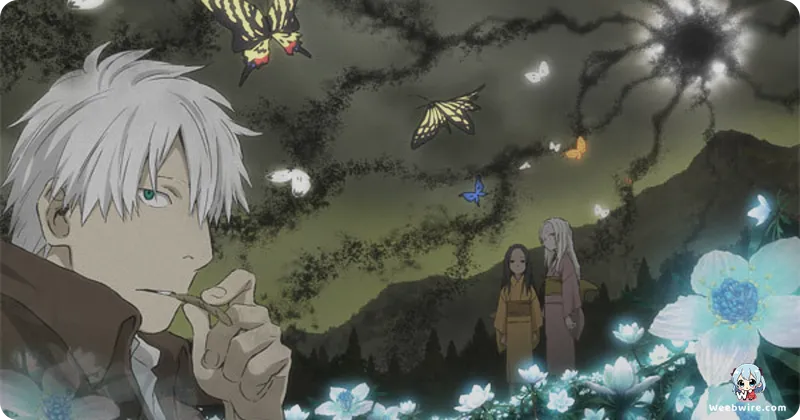Unmasking the Mushi: How Ginko's Tragic Past Defined the Supernatural Ecology of MUSHI-SHI

Few anime series achieve the delicate balance of ecological horror and meditative slice-of-life quite like MUSHI-SHI. This celebrated work, based on Yuki Urushibara’s masterful manga and exquisitely adapted by Studio Artland, transcends typical fantasy tropes, offering a deep dive into a subtle, often unseen world of supernatural biology. While its atmospheric brilliance is widely recognized, the complex lore governing this universe specifically the true nature of the Mushi and the protagonist Ginko remains fascinatingly opaque to many viewers.
The Primordial Life Forms
The fundamental truth of the series lies in the definition of the Mushi. These entities are frequently misidentified as traditional Japanese spirits or ghosts (yokai). However, Urushibara established them as something far more elemental: primordial life forms. They exist at the very bottom of the biological hierarchy, resembling pure microbes or raw elemental forces rather than mythological monsters. Crucially, they operate purely on instinct, devoid of malice or intent, yet their natural drives can disastrously conflict with human life. This sophisticated, ecological framework grounds the supernatural elements in a haunting sense of natural reality.
Ginko's Past and Transformation
Central to this reality is Ginko, the wandering Mushishi. His iconic appearance the striking white hair, the constant smoking, and the distinctive green eye is not arbitrary but a scar of his past. Ginko was originally named Yoki. His life was permanently altered after a childhood tragedy led him to be taken in by Nui, a fellow Mushi Master. Nui eventually fell prey to the effects of the Ginko Mushi, creatures residing within the Kouki, the ethereal stream of life light.

During a desperate attempt to save his mentor, Yoki was partially consumed by these Mushi. This catastrophic event cost him his left eye, bleached his hair white, and erased his memories. He adopted the name Ginko (using characters meaning 'silver' and 'Kouki') as a perpetual reminder of the trauma and the life force now tethered to him.
Furthermore, Ginko’s persistent itinerancy is not a lifestyle choice but a grim necessity. The Mushi that transformed him also imbued him with an intense attraction field for other Mushi. If he were to settle in any one place for an extended period, the resulting concentration of Mushi would pose an existential threat to the surrounding human population. This forced nomadic existence provides a profound layer of tragedy to his calm demeanor, marking him as a permanent outsider dedicated to aiding the communities he can never fully join.
The Acclaimed Studio Artland Adaptation
The 2005 anime adaptation by Studio Artland is lauded for its uncompromising commitment to the manga’s unique tone. The studio took a calculated risk by adopting a slow, meditative tempo, eschewing manufactured drama for reflective silence. Visually, they successfully translated the source material’s soft, almost watercolor-like aesthetic, using muted colors and natural lighting to evoke an ancient, rural Japan.
Perhaps the most pivotal element is the sound design. Instead of relying on a heavy musical score, the focus falls overwhelmingly on foley and ambient noise the rustle of leaves, the whisper of water, the subtle, unsettling sounds of the Mushi themselves. This minimalist sonic architecture immerses the viewer, reinforcing the series' central theme: that the Mushi are an integrated, unseen part of the vast, indifferent ecosystem, existing outside the bounds of human history, which remains intentionally ambiguous, lending the tales a quality of timeless, universal folklore.
Credits
MUSHI-SHI
Author
Yuki Urushibara
Cover Art
Yuki Urushibara
Studio
Artland
Publisher
Kodansha
Producers





